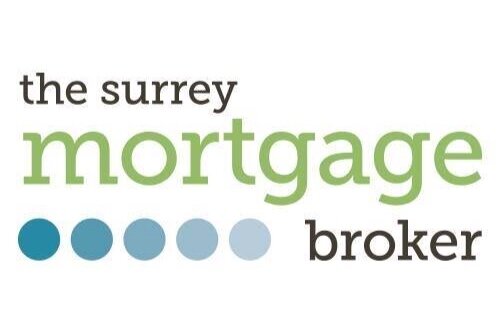Finding the right mortgage deal has become increasingly challenging. The current market, shaped by constantly changing deals and record-high product availability, presents a unique set of opportunities and challenges for borrowers. This environment is poignant for those thinking of getting a mortgage.
Whether you're a first-time buyer daunted by the myriad of choices or a homeowner weighing the benefits of remortgaging, understanding the current mortgage landscape is the first step towards making empowered financial decisions.
Individuals looking to secure their mortgage are discovering that the most attractive deals are quickly disappearing. Moneyfacts reported on the 14th of March that the typical availability of the best mortgage product has dropped sharply to just 15 days, a significant decrease from 28 days at the beginning of February last month.
This marks the lowest average availability recorded in six months and is actually approaching the all-time low of 12 days seen in July 2023, during the peak of mortgage rates. The news might surprise you, especially as inflation is slowing down and the Bank of England has maintained the base rate at 5.25% since August, suggesting the market should be steadier.
Recently, five lending institutions announced rate increases, including major UK banks like Santander, NatWest, Co-op Bank, and Principality Building Society, with Halifax also set to raise some of its rates. Nicholas Mendes, Mortgage Technical Manager at John Charcol, mentioned that mortgage rates are in constant flux, sometimes to the point where lenders adjust rates twice in a single week, often giving barely any notice of these changes.
Mortgage brokers have been advocating for a minimum 24-hour notice commitment to allow clients a fair chance at securing the best deals, aligning with consumer duty principles. However, this has mainly seen agreement from building societies, with NatWest being the notable bank to recently commit to providing 24 hours' notice or as much warning as feasible.
Why are lenders withdrawing mortgage offers?
Deals are being withdrawn by lenders, due to SONIA swap rates, which reflect market expectations and pricing for fixed mortgage rates. These swap agreements are crucial for mortgage lenders to mitigate the interest rate risk associated with offering fixed-rate mortgages. In simpler terms, swap rates provide a glimpse into lenders' expectations for future interest rates and heavily influence their pricing strategies.
Currently, two-year swap rates stand at 4.46%, while five-year swaps are at 3.85%. This is an increase from the beginning of the year, which saw two-year swaps at 4.04% and five-year swaps at 3.4%.
Karen Noye, a mortgage expert at Quilter, described navigating the mortgage market right now, as challenging due to the continual shifts and updates. She mentioned that the primary driver behind the changes in mortgage products is undoubtedly the swap rates. Even though inflation and the base rate have stabilised, market forecasts and predictions about future interest rates and inflation are constantly evolving, which then influences market rates.
Lenders also tweak their products based on their capacity to process applications. If there's a surge in applications causing delays, they might adjust their rates to moderate demand. However, in the current market climate, with transactions remaining low, this scenario is less frequent. For borrowers and brokers alike, the current market conditions are proving to be challenging. Delays or hesitations in submitting applications could lead to significant disappointment, with borrowers missing out on rates they assumed were locked in.
Karen Noye advises those considering a new mortgage, to start by getting your paperwork sorted to avoid any delays in application or securing a rate. Lenders' notices for rate withdrawals can be incredibly short, sometimes just a few hours. Consulting with a mortgage professional is more important than ever for navigating the market and finding a deal that fits individual circumstances well. Noye also emphasises not rushing into accepting a deal out of panic; getting proper advice is key to avoiding costly mistakes. Also, preparing at least six months ahead can be particularly beneficial, especially for remortgaging.
Mortgage Options hit a 16-year peak
Despite the rapid changes in the availability of top mortgage deals, the breadth of options in the market has hit a 16-year peak, reports Moneyfacts.
The total number of mortgage options available climbed month-over-month to 6,004, marking the highest point since March 2008. Rachel Springall, a finance expert at Moneyfacts, observed that this past March saw the most significant rise in mortgage choice in six months, with the total number of mortgages available to borrowers surpassing 6,000, a figure not seen in 16 years.
A closer look at different loan-to-value (LTV) categories brings encouraging news, especially for those with smaller deposits. Specifically, the selection of products at 90% LTV increased by 80 options month-over-month, reaching its highest level in four years (since March 2020) with 779 deals. After a previous decline, this rebound in product choice (which dropped to 681 in February 2024) is particularly noteworthy.
Furthermore, for those able to provide only a 5% deposit, the market now offers over 300 mortgage deals at 95% LTV, the most since June 2022. However, Springall notes a caveat for first-time buyers, who still face hurdles with affordability amidst fluctuating house prices and a scarcity of affordable housing. This challenge is compounded by the current average rates for two-year fixed deals at 90% and 95% LTV, which stand at 5.99%.
In today’s changing mortgage market, highlighted by a surge in options to a 16-year high and rapid adjustments in deals, the importance of expert advice has never been clearer. The current market offers both opportunities and challenges for those wanting to get a mortgage.
Mortgage Brokers are here to provide you with the personalised advice needed to make well-informed decisions. Whether you’re exploring your first mortgage, remortgaging, or navigating rate changes, I’m here to align your financial goals with the current market conditions, explain the documentation needed and help you get the best deal possible.
If you’re interested, please do reach out, and let’s talk about securing the best deal for you.

















